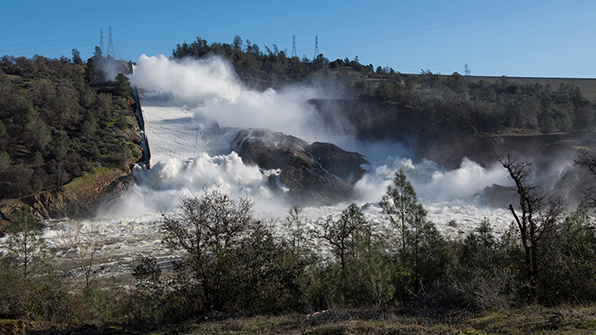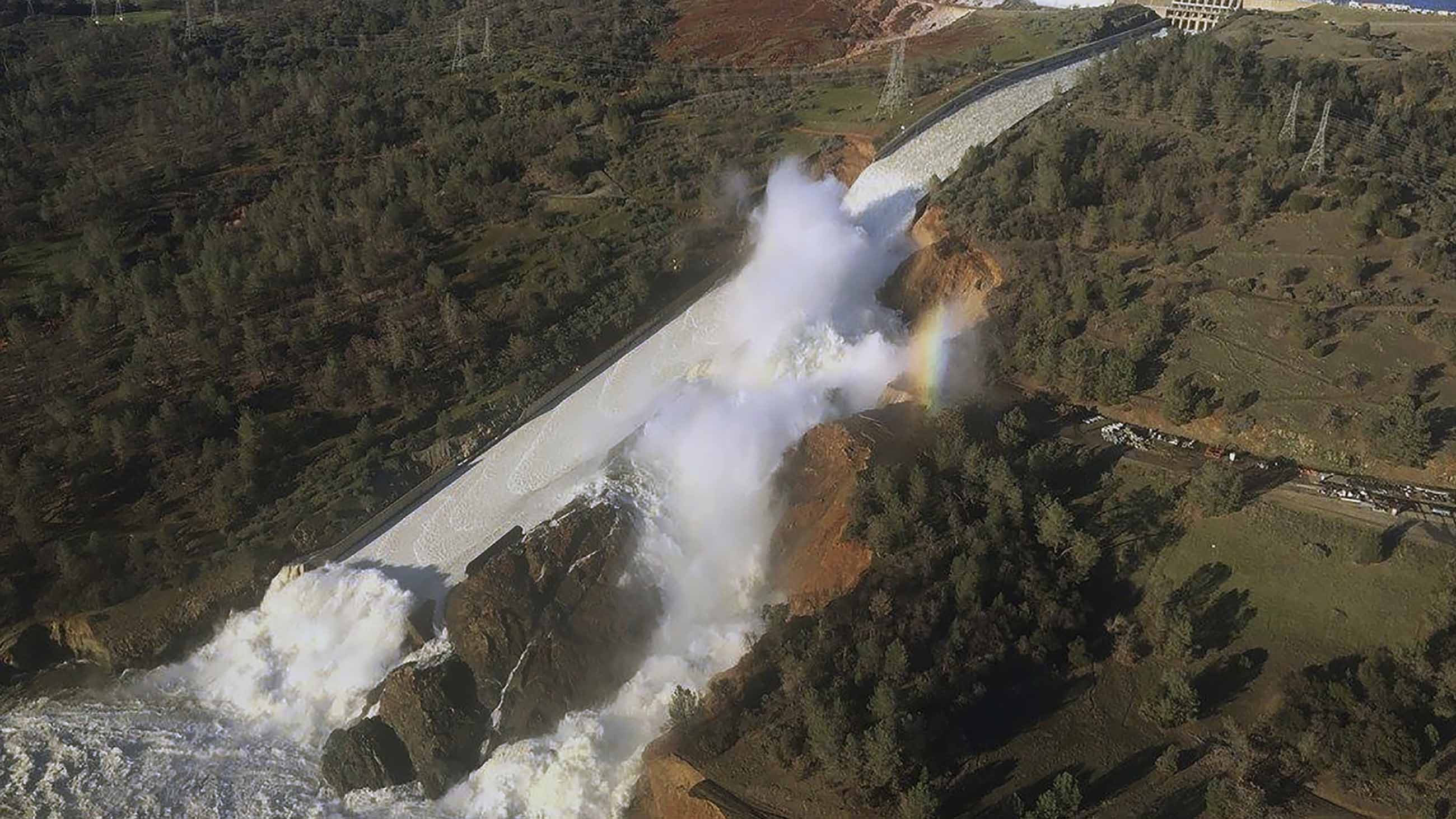The Oroville Dam Crisis Could Be the First of Many
Last weekend provided spectacular and soggy relief from the river of news coming out of Washington, D.C.: YouTube provided live views of walls of water roaring down the drainage channels, called spillways, at Northern California’s 770-foot-high Oroville Dam.

Water cascading down the Oroville Dam’s main spillway this week.
Visual: ca.gov.
Heavy rains early this month filled the reservoir behind the dam to the brim before a large crater was noticed in the dam’s main spillway. In response, operators released water on Saturday into an adjacent earthen emergency spillway, which then overflowed and eroded severely.
The next day, facing a potentially catastrophic flood, some 188,000 people living near the dam were ordered to evacuate. The immediate crisis passed by midweek, while officials continued to release water from the reservoir at a rate of about 100,000 cubic feet per second.
The Oroville Dam itself has not failed. But conditions there, which remain hazardous, raise questions about the state of the nation’s tens of thousands of dams.
“Problems with the Oroville Spillway have been known for a while,” says Michelle Ho, a civil and environmental engineer and a postdoctoral research scientist at the Columbia Water Center, part of the Earth Institute at Columbia University.
But it is difficult to speak in general terms about U.S. dam safety. In fact, no database exists that systematically identifies dam failure risks, Ho says. (One effort to assess dam performance across several dimensions is underway at Stanford University, says Ho’s Columbia colleague Luc Bonnafous.)
Several factors bode ill for our dams. “The intersection of aging dams, particularly inadequately monitored ones, and increased populations living on dam and levee-protected flood plains increases the risk of failure and heightens the impacts of failure,” Ho says.
Oversight, regulation and maintenance of U.S. dams is a largely decentralized morass of federal, state, and private agencies and organizations that can be paralyzed by a lack of agreement on how to pay for needed changes.
The health outlook for dams could be improved with a “comprehensive national water assessment and a formal analysis of the role dams play in our water future,” Ho and colleagues wrote in a paper published February 15 in the journal Water Resources Research.
Plans to address the nation’s aging infrastructure present an opportunity to rethink the entire water system — including storage, safe drinking-water delivery, and flood control — that supports our national economy, including the agricultural sector, energy industry, municipalities, and more, Ho says.
Dam failures are still rare in the U.S. But videos of this month’s damage at the Oroville Dam brought back sobering memories for Kevin Fedarko, a journalist and author based in Flagstaff, Arizona.
He’s the author of “The Emerald Mile,” an account of the 1983 near-failure at Arizona’s massive Glen Canyon Dam, and an associated record-breaking speed run by a three-man dory crew down the Colorado River through the Grand Canyon.
“I did find myself looking at the YouTube footage and just being reminded of ’83 and Glen Canyon Dam,” he says. Oroville is “a different dam in a different part of the country that is designed in a different kind of way, with a different set of events driving it. But I did say to myself, ‘Oh, my God. It’s 1983 all over again.’”










